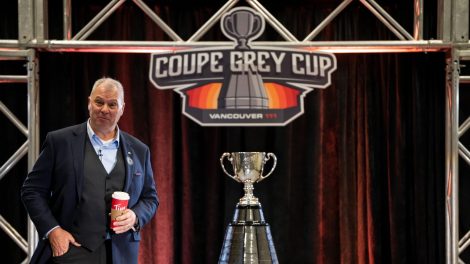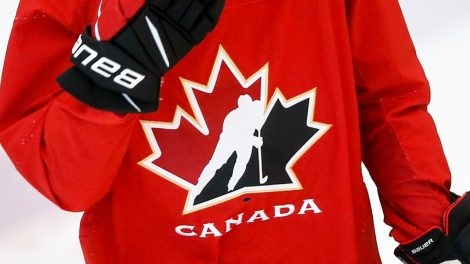OTTAWA – They may be the most expensive hockey team ever assembled.
Add up the salaries owed to the 23 men that will represent Team Canada at the World Cup and you get a whopping $173,010,000 for the upcoming season. That works out to a shade more than $7.5-million apiece on average.
Yes, they’re all quite capable of covering the cheque at dinner.
For Mike Babcock and the coaching staff, there are some challenges that come with that embarrassment of riches. They’ve got a lot of big puzzle pieces to work with and somehow have to make them fit together.
They’re also going to have scratch two skaters and a goalie every game. We’re talking about top-tier NHLers, guys who have been the alpha dog in basically every dressing room they’ve ever occupied. It starts with Friday’s exhibition game against Team USA in Columbus.
“I’m just going to tell them,” said Babcock. “I’ve found in life when someone’s giving me bad news I like it fast.”
At the Sochi Olympics, P.K. Subban only dressed for one of the six games. Dan Hamhuis averaged four minutes of ice time during the five he played. Marty St. Louis, Patrick Sharp and Matt Duchene were all made a healthy scratch at some point during the tournament.
Duchene was the youngest member of that team and went to Russia knowing that he probably wouldn’t be in the lineup for every game. It still stung to watch two from the stands.
“When it happened, it wasn’t easy,” he said. “I mean you can sit here and say ‘you’ve got to check your ego at the door’ – say all the cliché stuff – but it’s never easy.
“It hurts your pride a little bit.”
He is back for the World Cup and doesn’t appear to be among the early candidates to sit out. Over three days of practice here this week, Corey Perry looked to be the 13th forward based on line rushes – although he was used in drills with the second power-play unit.
Tyler Seguin missed one of the skates due to illness and is another potential scratch at forward depending on his health.
On the blue line, Jay Bouwmeester looked to be the odd-man out. If not him, another left-hand shot in Jake Muzzin is a possibility.
Corey Crawford is the presumed third goalie.
Babcock plans to announce his decisions after the morning skate at Nationwide Arena on Friday.
“I’ll talk to (the players) tonight and I’ll talk to you guys in the morning,” he said Thursday before heading to the airport.
With three games before the tournament and as many as seven during it, Team Canada will likely cycle through a few different scratches over the next few weeks. Some players might be sitting for the first time in their lives.
Duchene believes it’s important for anyone in that situation to focus on staying positive.
“Be a good teammate, be a good cheerleader,” he said. “Sometimes that’s the best way to help the team. That’s what I tried to do when I was out and when I got back in I tried to make it count.”
The reality for every version of Team Canada is that only a small handful of guys get to fill the same kind of role they’re accustomed to in the NHL.
Shea Weber (21:50 per game) and Duncan Keith (21:06) logged the most minutes during the Sochi Olympics. Sidney Crosby finished with an average of 16:27 – more than four minutes below his career average with the Pittsburgh Penguins.
It goes down on a sliding scale from there.
Perhaps this is where the past experience yields the biggest advantage for this group. A number of these players have been together on national teams repeatedly during the last decade and they have an extraordinarily good record in those situations.
“Our age group, our group of guys that have come up together, it’s never been a problem,” said centre Ryan Getzlaf.
“There’s not enough room to go around,” added Bouwmeester. “I know from the last Olympics that it was never a problem. Nobody had a problem with anything and that’s why we came together and it worked.”
Babcock has a knack for boiling any issue down to a simple, straightforward fact.
He believes that having the chance to participate in practices and meetings and team dinners with this many accomplished players is a reward in itself.
“If you’re one of the best athletes in the world and one of the best players in the league and now you don’t get to play, it’s tough,” said Babcock. “The other option is to not be on the team, and to me that’s not as good.”








